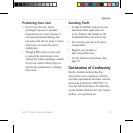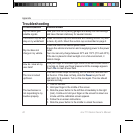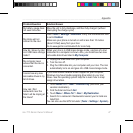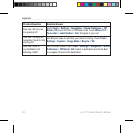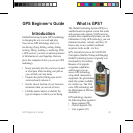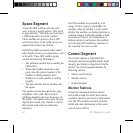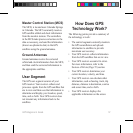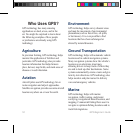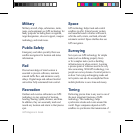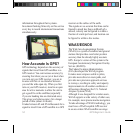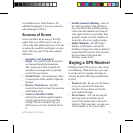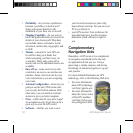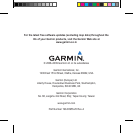50 GPS Beginner’s Guide
Space Segment
At least 24 GPS satellites orbit the earth
twice a day in a specic pattern. They travel
at approximately 7,000 miles per hour about
12,000 miles above the earth’s surface.
These satellites are spaced so that a GPS
receiver anywhere in the world can receive
signals from at least four of them.
Each GPS satellite constantly sends coded
radio signals (known as pseudorandom code)
to the earth. These GPS satellite signals
contain the following information:
The particular satellite that is sending the •
information
Where that satellite should be at any •
given time (the precise location of the
satellite is called ephemeris data)
Whether or not the satellite is working •
properly
The date and time that the satellite sent •
the signal
The signals can pass through clouds, glass,
and plastic. Most solid objects such as
buildings attenuate (decrease the power of)
the signals. The signals cannot pass through
objects that contain a lot of metal or objects
that contain water (such as underwater
locations).
The GPS satellites are powered by solar
energy. If solar energy is unavailable, for
example, when the satellite is in the earth’s
shadow, the satellites use backup batteries to
continue running. Each GPS satellite is built
to last about 10 years. The Department of
Defense monitors and replaces the satellites
to ensure that GPS technology continues to
run smoothly for years to come.
Control Segment
The control segment is responsible for
constantly monitoring satellite health, signal
integrity, and orbital conguration from the
ground. The control segment includes the
following sections:
Master control station•
Monitor stations•
Ground antennas•
Monitor Stations
At least six unmanned monitor stations
are located around the world. Each station
constantly monitors and receives information
from the GPS satellites and then sends the
orbital and clock information to the master
control station (MCS).




